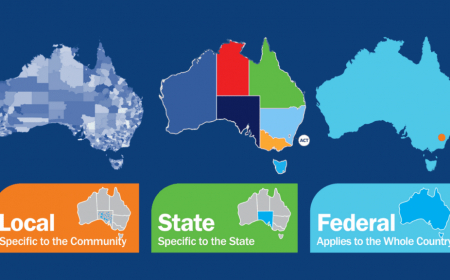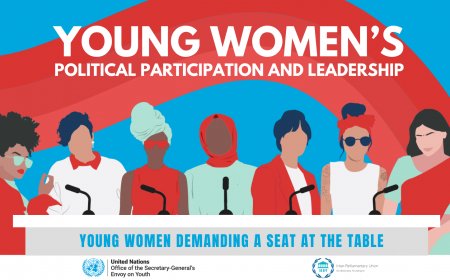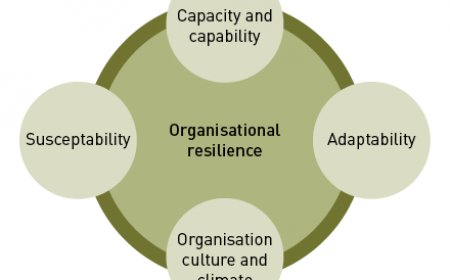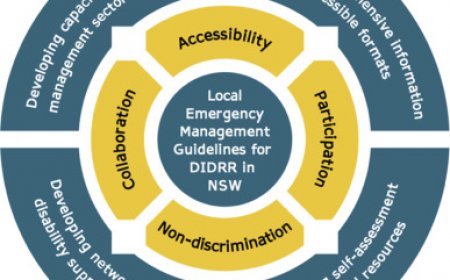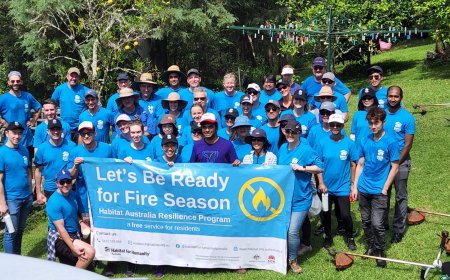Australia Public Policy Trends for 2025
Explore Australia’s public policy trends for 2025, covering climate action, digital transformation, healthcare reform, education innovation, and social equity. Stay informed about the nation’s roadmap to a sustainable and inclusive future.
In the rapidly changing global environment, Australia’s public policy trends are increasingly shaped by a confluence of economic, social, and technological factors. As we move toward 2025, the nation is poised to address critical challenges while embracing transformative opportunities. The Australian government, in collaboration with stakeholders across industries, is crafting policies that aim to balance economic growth , social equity , and environmental sustainability . This article delves into the key trends expected to dominate the public policy discourse in Australia over the next few years.
The significance of these trends cannot be overstated. They will not only shape the lives of millions of Australians but also influence the country’s standing on the global stage. From climate action to digital transformation , from healthcare reform to education innovation , the policies being developed today will define Australia’s trajectory in the coming decades. By understanding these trends, businesses, policymakers, and citizens can better prepare for the future.
This comprehensive analysis explores the most pressing issues facing Australia and examines how public policy is evolving to address them. We will discuss the role of government intervention , the importance of stakeholder engagement , and the potential impact of emerging technologies. Our goal is to provide a detailed roadmap of what lies ahead, offering insights that are both actionable and forward-thinking.
Climate Action: A Cornerstone of Australia's Policy Agenda
Australia’s Commitment to Net Zero Emissions
As one of the world’s largest per capita carbon emitters, Australia faces mounting pressure to accelerate its transition to a low-carbon economy. By 2025, climate action is expected to become a cornerstone of the nation’s public policy agenda. The federal government has committed to achieving net zero emissions by 2050 , a target that requires significant policy reforms and investments in renewable energy infrastructure.
Key initiatives include the expansion of solar and wind energy projects , the development of green hydrogen hubs , and the implementation of stricter emissions standards for industries. Policymakers are also exploring mechanisms such as carbon pricing and emissions trading schemes to incentivize businesses to adopt cleaner practices. These measures are complemented by state-level initiatives, such as Victoria’s Zero Emissions Vehicle Roadmap and Queensland’s Renewable Energy Target .
The Australian Renewable Energy Agency (ARENA) plays a pivotal role in funding innovative projects that demonstrate the feasibility of large-scale renewable energy deployment. For example, ARENA has supported solar farms in regional areas, offshore wind projects along the southern coast, and battery storage systems to stabilize the grid. Additionally, the government is investing in research and development to advance emerging technologies like carbon capture and storage (CCS) and direct air capture (DAC) .
One notable project is the Snowy 2.0 pumped hydro scheme , which aims to provide reliable renewable energy storage and reduce reliance on fossil fuels. This initiative underscores Australia’s commitment to integrating renewables into the national energy mix while ensuring grid stability. Furthermore, the National Electric Vehicle Strategy seeks to accelerate the adoption of electric vehicles (EVs) through subsidies, charging infrastructure development, and consumer awareness campaigns.
Adapting to Climate Change: Resilience and Mitigation
While reducing emissions is critical, adapting to the impacts of climate change is equally important. Rising temperatures, prolonged droughts, and extreme weather events are already affecting Australian communities. To address these challenges, the government is investing in climate resilience programs that focus on water management, disaster preparedness, and ecosystem restoration.
For instance, the National Climate Resilience and Adaptation Strategy outlines a framework for building adaptive capacity across sectors. This includes upgrading infrastructure to withstand extreme weather, promoting sustainable agricultural practices, and enhancing urban planning to mitigate heat island effects. Additionally, indigenous knowledge systems are being integrated into policy frameworks to ensure culturally appropriate solutions.
Water scarcity remains a pressing issue, particularly in arid regions. The Murray-Darling Basin Plan exemplifies efforts to manage water resources sustainably. It involves reallocating water entitlements, restoring wetlands, and implementing efficient irrigation techniques. Similarly, desalination plants in coastal cities like Sydney and Melbourne have been expanded to secure freshwater supplies during periods of drought.
Disaster preparedness is another focal point. Following devastating bushfires in 2019-2020, the government established the National Bushfire Recovery Fund to support affected communities and improve fire management strategies. Investments in early warning systems, firefighting equipment, and community education programs aim to minimize future losses.
International Collaboration and Leadership
Australia’s climate policies are not developed in isolation. The nation plays an active role in international forums such as the United Nations Framework Convention on Climate Change (UNFCCC) and the G20 . By collaborating with global partners, Australia aims to share best practices, secure funding for green projects, and contribute to global efforts to limit temperature rise to 1.5°C above pre-industrial levels.
One notable example is the Indo-Pacific Carbon Offsetting Scheme , which seeks to create a regional market for carbon credits. This initiative not only supports emission reductions but also fosters economic cooperation among neighboring countries. Furthermore, Australia’s leadership in areas like marine conservation and biodiversity protection underscores its commitment to addressing the planetary crisis.
The Great Barrier Reef Marine Park Authority is working closely with scientists and local communities to protect this World Heritage site from coral bleaching and other threats. Restoration projects, such as coral gardening and reef seeding, are underway to enhance resilience against climate impacts. Such efforts highlight the intersection of environmental stewardship and policy innovation.
Digital Transformation: Shaping the Future of Governance
The Role of Technology in Modernizing Public Services
Digital transformation is revolutionizing how governments deliver services to citizens. In Australia, the push for smart governance is gaining momentum as policymakers recognize the potential of technology to enhance efficiency, transparency, and accessibility. By 2025, digital platforms are expected to play a central role in areas such as healthcare, education, taxation, and social welfare.
The Digital Economy Strategy 2030 serves as a blueprint for this transformation, outlining goals such as universal broadband access, increased cybersecurity measures, and the adoption of artificial intelligence (AI) in public administration. Initiatives like MyGov and Services Australia exemplify how digital tools can streamline interactions between citizens and the government, reducing bureaucratic hurdles and improving user experience.
For example, the Single Touch Payroll (STP) system simplifies tax reporting for employers by automating payroll submissions to the Australian Taxation Office (ATO). Similarly, the eHealth Record System enables patients to access their medical records online, facilitating continuity of care and reducing administrative burdens on healthcare providers.
Data-Driven Decision Making
At the heart of digital transformation lies the power of data. Governments are leveraging advanced analytics to inform policy decisions, optimize resource allocation, and monitor outcomes. For example, real-time data collected through IoT devices is being used to manage traffic congestion, predict natural disasters, and track public health trends.
However, the use of data raises important ethical considerations. Ensuring data privacy , preventing misuse, and maintaining public trust are paramount. To address these concerns, Australia has enacted robust legislation such as the Privacy Act 1988 and the Consumer Data Right (CDR) framework. These laws empower individuals to control their personal information while enabling businesses to innovate responsibly.
The Digital Transformation Agency (DTA) oversees the implementation of digital initiatives across government departments. Its mandate includes developing interoperable systems, enhancing cybersecurity protocols, and fostering collaboration between agencies. For instance, the Trusted Digital Identity Framework (TDIF) ensures secure and seamless authentication processes for online services.
Bridging the Digital Divide
Despite rapid advancements, disparities in digital access persist, particularly in rural and remote areas. Bridging the digital divide remains a priority for policymakers. Programs like the Regional Connectivity Program and the Mobile Black Spot Program aim to expand internet coverage and improve connectivity for underserved populations.
Moreover, digital literacy initiatives are equipping Australians with the skills needed to thrive in a tech-driven world. Partnerships between the government, educational institutions, and private sector players are fostering inclusive growth and ensuring no one is left behind. The Digital Skills Organisation (DSO) offers free training modules on topics ranging from basic computer usage to advanced coding techniques.
Efforts are also underway to make digital services more accessible to people with disabilities. The Web Accessibility National Transition Strategy mandates compliance with international standards, ensuring websites and applications are usable by all individuals regardless of physical or cognitive impairments.
Healthcare Reform: Building a Resilient System
Strengthening Primary Care
The COVID-19 pandemic highlighted vulnerabilities in Australia’s healthcare system, prompting calls for comprehensive reform. By 2025, there will be a renewed focus on strengthening primary care to ensure timely and affordable access to medical services. Key strategies include expanding the scope of practice for allied health professionals, increasing funding for community health centers, and integrating telehealth into routine care delivery.
Telehealth, in particular, has emerged as a game-changer during the pandemic. Its continued expansion will enable patients in remote areas to consult specialists without traveling long distances. Meanwhile, investments in preventive care and chronic disease management will reduce hospital admissions and lower overall healthcare costs.
The Primary Health Networks (PHNs) serve as intermediaries between the federal government and local healthcare providers. They coordinate services, identify gaps in care, and allocate resources effectively. For example, PHNs have partnered with Aboriginal Community Controlled Health Organizations (ACCHOs) to deliver culturally appropriate care to Indigenous Australians.
Mental Health and Wellbeing
Mental health is another area receiving heightened attention. With rising rates of anxiety, depression, and substance abuse, the government is prioritizing mental health services as part of its broader healthcare agenda. The National Mental Health and Suicide Prevention Plan outlines steps to improve access to counseling, crisis support, and early intervention programs.
Workplace mental health is also under scrutiny, with new regulations mandating employers to create psychologically safe environments. These measures reflect a growing recognition that mental wellbeing is integral to overall quality of life and productivity.
Initiatives like the Headspace program cater specifically to young people aged 12-25, providing mental health support, employment assistance, and educational guidance. Similarly, the Beyond Blue helpline offers confidential counseling and referrals for individuals experiencing emotional distress.
Addressing Healthcare Inequities
Equity remains a persistent challenge in Australia’s healthcare landscape. Indigenous Australians, people with disabilities, and low-income households often face barriers to accessing care. To address these inequities, targeted interventions are being implemented, including culturally sensitive services, subsidized medications, and outreach programs.
The establishment of the National Agreement on Closing the Gap underscores the government’s commitment to achieving health parity for Aboriginal and Torres Strait Islander peoples. Progress in this area will require sustained effort and collaboration across all levels of society.
For example, the Indigenous Rangers Program combines environmental conservation with job creation, empowering Indigenous communities to manage and protect their ancestral lands. This holistic approach addresses both ecological and socioeconomic determinants of health.
Education Innovation: Preparing for Tomorrow’s Workforce
Transforming Learning Environments
Education is undergoing a paradigm shift, driven by technological advancements and shifting labor market demands. By 2025, Australian schools and universities will embrace innovative teaching methods and curricula designed to equip students with 21st-century skills. Emphasis will be placed on STEM subjects, creativity, critical thinking, and emotional intelligence.
Blended learning models, combining online and offline instruction, are becoming increasingly common. Virtual reality (VR) and augmented reality (AR) technologies are being deployed to create immersive learning experiences. At the same time, lifelong learning initiatives are encouraging adults to upskill and reskill throughout their careers.
The Australian Curriculum, Assessment and Reporting Authority (ACARA) regularly updates curriculum guidelines to align with contemporary needs. Recent revisions emphasize computational thinking, financial literacy, and global citizenship, preparing students for an interconnected world.
Promoting Equity in Education
Ensuring equitable access to quality education remains a top priority. Disadvantaged groups, including Indigenous students and those from low socioeconomic backgrounds, continue to lag behind their peers. To close these gaps, the government is investing in scholarships, mentorship programs, and infrastructure upgrades in underfunded schools.
Additionally, vocational education and training (VET) pathways are being revitalized to provide alternative routes to employment. Apprenticeships and industry partnerships are helping young Australians gain hands-on experience and secure stable jobs.
The Trade Support Loans program assists apprentices with living expenses, making VET more financially viable. Likewise, the Higher Education Participation and Partnerships Program (HEPPP) targets students from disadvantaged backgrounds, offering academic support and career guidance.
Global Competitiveness and Research Excellence
Australia’s higher education sector plays a vital role in driving research and innovation. By fostering collaboration between academia, industry, and government, the nation aims to maintain its competitive edge on the global stage. Priority areas include clean energy, biotechnology, artificial intelligence, and space exploration.
Initiatives like the Australian Research Council (ARC) grants and the National Science Statement underscore the importance of scientific discovery in solving complex societal problems. Supporting researchers and nurturing talent will be crucial for sustaining long-term prosperity.
Universities are partnering with multinational corporations to commercialize breakthrough technologies. For example, the CSIRO collaborates with startups and established firms to develop scalable solutions for agriculture, mining, and healthcare. Such collaborations not only generate economic value but also enhance Australia’s reputation as a hub for cutting-edge research.
Social Equity: Advancing Inclusive Policies
Closing the Gender Pay Gap
Achieving gender equality remains a work in progress. While women constitute nearly half of Australia’s workforce, they earn significantly less than men on average. Addressing the gender pay gap involves implementing fair wage policies, promoting flexible work arrangements, and combating workplace discrimination.
Legislative reforms, such as mandatory gender pay audits and parental leave enhancements, are paving the way for greater parity. Moreover, campaigns aimed at challenging stereotypes and encouraging female participation in male-dominated fields are yielding positive results.
The Workplace Gender Equality Agency (WGEA) collects data on gender diversity within organizations, holding them accountable for progress. Companies that fail to meet benchmarks risk reputational damage and regulatory penalties.
Supporting Multicultural Communities
As a multicultural nation, Australia celebrates diversity while grappling with integration challenges. Public policies are being refined to support migrants, refugees, and culturally diverse communities. Language assistance programs, anti-discrimination laws, and cultural awareness training are some of the measures being adopted.
The Multicultural Affairs Strategy provides a framework for fostering social cohesion and mutual respect. Celebrating festivals, preserving heritage sites, and promoting cross-cultural dialogue contribute to a harmonious society.
Community organizations play a vital role in bridging divides. For instance, the Settlement Services International (SSI) assists newly arrived refugees with housing, employment, and language training. Their holistic approach ensures newcomers feel welcomed and empowered to contribute to Australian society.
Housing Affordability Crisis
Skyrocketing property prices have made homeownership unattainable for many Australians. Tackling the housing affordability crisis requires bold policy interventions. Measures such as increasing housing supply, introducing rent controls, and providing first-home buyer incentives are being explored.
Affordable housing projects, particularly those targeting vulnerable groups, are receiving increased funding. Collaborations between the government, non-profits, and private developers are essential for scaling solutions and meeting demand.
The National Housing Finance and Investment Corporation (NHFIC) facilitates affordable housing developments by offering low-interest loans to community housing providers. Its flagship initiative, the Affordable Housing Bond Aggregator , channels investor capital into social and affordable housing projects.
Accessibility
Ensuring that public policies are accessible to all Australians is fundamental to their success. This involves designing inclusive programs, removing physical and digital barriers, and engaging marginalized voices in decision-making processes. Accessibility audits, feedback mechanisms, and participatory design workshops help identify and address potential obstacles.
For example, the Accessible Tourism Strategy promotes tourism destinations and activities that accommodate people with disabilities. Wheelchair-accessible beaches, audio-described museum tours, and sign language interpreters at events enhance inclusivity and broaden participation.
Similarly, the Disability Employment Services (DES) program connects job seekers with disabilities to suitable employment opportunities. Tailored support, workplace modifications, and ongoing mentoring ensure successful transitions into the workforce.
How to Engage with Emerging Public Policy Trends
To stay informed about Australia’s evolving public policy landscape, individuals and organizations should actively participate in consultations, attend workshops, and leverage online resources provided by government agencies. Building networks with policymakers and advocacy groups can also facilitate meaningful contributions.
Subscribing to newsletters from bodies like the Department of Industry, Science and Resources or following parliamentary committees on social media keeps stakeholders updated on legislative developments. Participating in town hall meetings, submitting written submissions, and joining advisory panels amplify grassroots voices in policy formulation.
Technology platforms, such as Engage Victoria or Have Your Say NSW , enable citizens to engage directly with decision-makers on specific issues. Crowdsourcing ideas, voting on proposals, and tracking implementation timelines foster transparency and accountability.
Conclusion
Australia’s public policy trends for 2025 reflect a dynamic interplay of challenges and opportunities. By prioritizing climate action, digital transformation, healthcare reform, education innovation, and social equity, the nation is laying the groundwork for a prosperous and inclusive future. Success will depend on collective effort, visionary leadership, and unwavering commitment to the common good.
Each trend discussed—whether it pertains to environmental sustainability, technological advancement, or social justice—represents a piece of a larger puzzle. Together, they form a cohesive strategy aimed at enhancing the quality of life for all Australians while positioning the country as a leader on the global stage.
As we look ahead, it is imperative to remain vigilant, adaptable, and collaborative. Only through sustained dialogue and action can we navigate the complexities of our time and build a brighter tomorrow.
10 FAQs
-
What are the main priorities of Australia’s public policy agenda for 2025?
Answer: Climate action, digital transformation, healthcare reform, education innovation, and social equity. -
How is Australia addressing its climate commitments?
Answer: Through renewable energy investments, carbon pricing mechanisms, and international collaborations. -
What role does technology play in modernizing governance?
Answer: It enhances service delivery, enables data-driven decision-making, and improves citizen engagement. -
Why is bridging the digital divide important?
Answer: To ensure equitable access to opportunities and foster inclusive growth. -
How is Australia tackling mental health issues?
Answer: By expanding services, regulating workplace conditions, and raising awareness. -
What steps are being taken to improve education equity?
Answer: Scholarships, infrastructure upgrades, and vocational training pathways. -
How is the gender pay gap being addressed?
Answer: Through legislative reforms, flexible work policies, and awareness campaigns. -
What challenges do multicultural communities face?
Answer: Integration, language barriers, and discrimination. -
What solutions are proposed for the housing affordability crisis?
Answer: Increasing supply, rent controls, and first-home buyer incentives. -
Why is stakeholder engagement crucial for policy success?
Answer: It ensures inclusivity, builds trust, and fosters collaborative problem-solving.
What's Your Reaction?
 Like
0
Like
0
 Dislike
0
Dislike
0
 Love
0
Love
0
 Funny
0
Funny
0
 Angry
0
Angry
0
 Sad
0
Sad
0
 Wow
0
Wow
0



